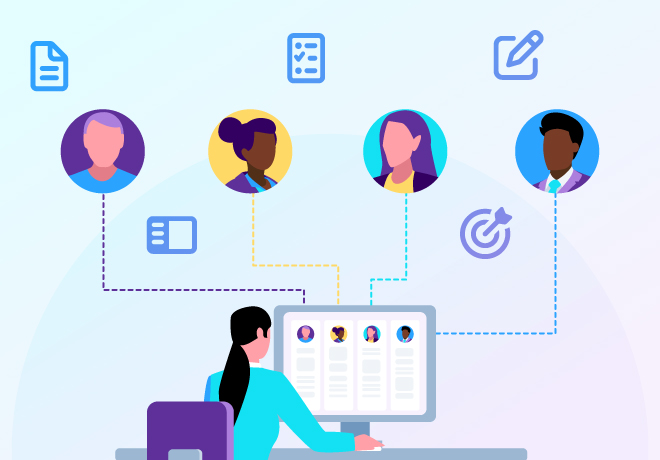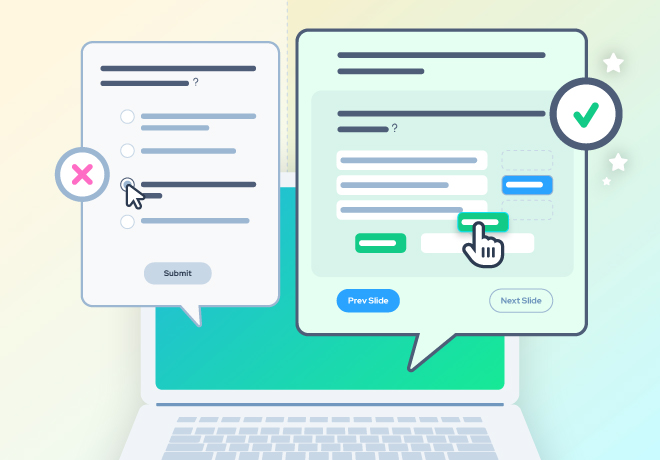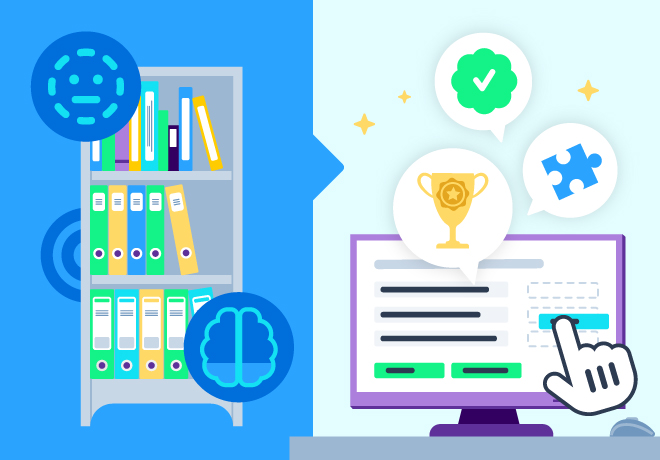
What is the forgetting curve?

Related articles
Get valuable eLearning insights to your inbox.
Listen to Neovation’s Demystifying eLearning podcast generated with NotebookLM!
Listen to our podcast on your favorite platform!
Forgetting is the bane of training. Learners cover vast amounts of material during training courses … but over time, they forget much of what they’ve learned.
The key to effective training, then, is understanding not only how people learn but also what influences their rate of forgetting.
The forgetting curve, based on experiments by Hermann Ebbinghaus, is a concept that has led to an overly simplistic understanding of long-term retention. This in turn has undermined the efforts of training designers and developers to create memorable training.
Rather than trying to game the forgetting curve, training professionals should focus on strategies that lead to strong knowledge acquisition and retention.
Ebbinghaus forgetting curve
In the late 1800s, German psychologist Hermann Ebbinghaus tested his memory. He used lists of nonsense syllables and tested how long he could remember them. The concept of the “forgetting curve” evolved from these experiments.
It is usually depicted as a downward-curving graph showing the amount a typical learner forgets over time. The curve drops steeply at first — indicating that learners forget quite a bit of what they’ve learned fairly quickly. It then flattens — but only after learners have forgotten most of the content.

The forgetting curve is responsible for volumes of fake statistics on how people forget X% — 40 or 60 or 90 percent — of training content within an hour, a day, or a week.
The curve and tidy statistics are an over-simplification.
In a thorough review of memory-over-time studies, Will Thalheimer demonstrates that the effects of time on training retention are far more complicated than the glib statistics indicate.
What people remember and for how long is a function of many things, including:
- What they’re studying
- How much they know going in
- How interested in the material they are or how strongly motivated to learn it
- How the material is taught
- How retention is tested
- When retention is tested
There’s no single formula that can reveal what an individual learner will retain from a specific training event — no universal or even broadly applicable “forgetting curve.”
Instead, there is the certainty that one-time exposure to training content is not enough to ensure that learners remember key information.
Relevant content is more memorable
The material that learners are asked to remember matters when trying to build retention. Ebbinghaus tested himself using nonsense syllables. This meaningless “information” gave him no context, no stake in learning it; the syllables are the very embodiment of “forgettable.” So he forgot them — quickly.
As Thalheimer’s review of research found, the more that training content veers from nonsense syllables toward the relevant or personally meaningful end of the continuum, the greater the likelihood that a learner will retain it. The catch is, of course, that what is meaningful or relevant for one learner may not be meaningful to another.
Thalheimer notes that most memory experiments use mundane and meaningless content, like word lists or random bits of trivia, contributing to the frightening speed at which experiment subjects forget it and lending an aura of credibility to those statistics.
But training managers don’t want learners to remember meaningless syllables!
Build learning retention

Providing relevant training content is a great place to start building retention. Unfortunately, a lot of corporate training still serves all learners the same content, virtually ensuring that much of the content will be irrelevant to many learners.
Adaptive training goes a long way toward resolving this particular issue by targeting content individually, based on each learner’s mastery goals and their prior performance.
But relevant content is just a start! There’s so much more a training designer can do.
One-and-done? Nope!
Putting learners through training once and expecting them to retain the critical information is, essentially, setting them up to fail. Learners need to encounter key content — concepts, processes, details — multiple times and in multiple ways to build long-term retention.
This generally means adding a knowledge-retention component to a training program — for instance, a microlearning campaign that kicks in once the instructor-led training or eLearning course wraps up. Practicing interleaved learning, which asks learners to recall and apply information on different topic areas during refresher sessions, can supercharge that knowledge-retention program.
Repetition could also mean nurturing a continuous learning culture that supports learners who engage with training, use performance support, and seek resources that refresh and reinforce what they’ve studied.
Encourage selective forgetting — with spaced repetition

The average worker — the average human, for that matter — encounters a vast amount of information every day. We have to forget most of it, just to function.
When learners are repeatedly exposed to selected pieces of content, over time, in spaced intervals, their memories of that information grow strong and deep. The material that they are not re-exposed to and the content they do not consciously try to recall — in other words, the vast majority of information they’ve encountered — falls by the wayside.
“The ability to retrieve and generate information that is wanted, relevant, and appropriate is made possible by the ability to inhibit, and thus forget, information that is unwanted, irrelevant, and inappropriate,” according to researcher Benjamin Storm.
Learners and learning designers can help that process along: Practicing retrieval of wanted information helps inhibit the recall of other content. That is, it helps learners distinguish relevant from irrelevant information, and it helps them suppress the irrelevant — never practiced — content, according to Storm.
Repeated exposure builds long-term retention. And spaced repetition — repeating the information at increasingly longer intervals — appears to do this most effectively. Multiple studies have found that engaging in several short learning sessions, interspersed with breaks, enables students to improve their performance on exams by remembering more content, longer.
When mastering new knowledge, repetitions should occur close together. As the material becomes more familiar, repetitions can be spaced farther apart.
Create context for learning and recalling information
An additional strategy Thalheimer suggests for building retention is aligning the context where learners learn the information with the context where they will be asked to recall and apply it.
This could mean moving learning into the workflow and increasing the use of performance support to supplement or partially replace formal training sessions that take learners away from work.
It can also mean changing up the way content is taught.
For instance, scenario-based learning and simulations place instructional content into a context that recalls or even mimics the learner’s on-the-job experience by using scenarios that they might credibly face at work. Immersive simulations allow workers to practice conversations and even processes in preparation for encountering similar incidents or tasks on the job. Even simple activities like multiple-choice questions can bring mini-scenarios into learning and assessment: Ask learners questions that require applying content, rather than simply asking them to regurgitate facts or define terms or concepts.
Don’t let the forgetting curve dominate training
What matters when designing training is not an (inaccurate) estimate of how quickly learners will forget the content — it’s what you can do to ensure they will remember it. Focusing on knowledge retention strategies is the way to move past the forgetting curve and on to improved training retention and on-the-job performance.

An experienced writer, editor, tech writer, and blogger, Pam helps you make sense of learning science and eLearning technology. She provides information you can use to drive improvements in your training effectiveness and ROI.
Become part of our L&D community
We publish a new learning hub article — full of useful, practical topics — weekly.
Not sure where where you want to start? Jump into one of our recently published articles and see where it takes you!








-svg.svg)
-svg.svg)
-svg.svg)
-svg.svg)